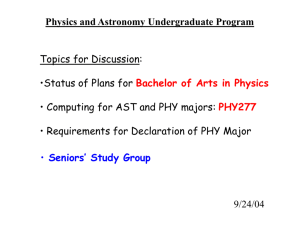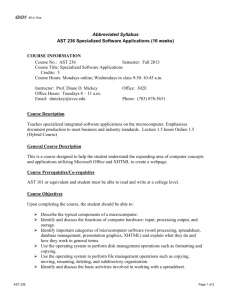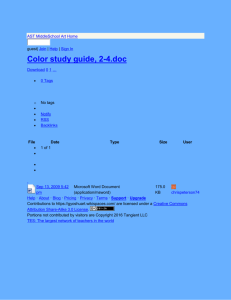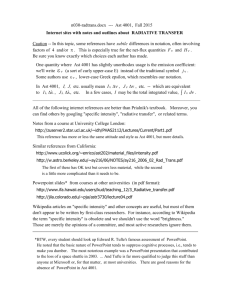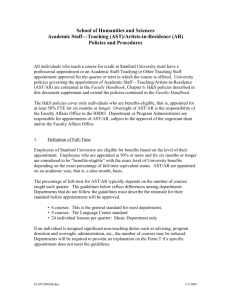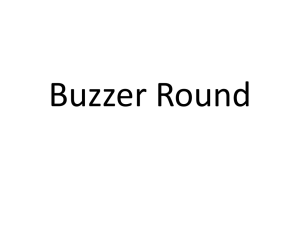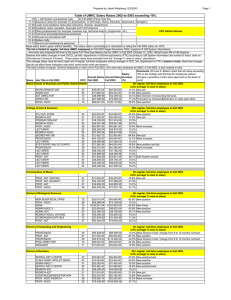mendez1204 - Stony Brook University
advertisement
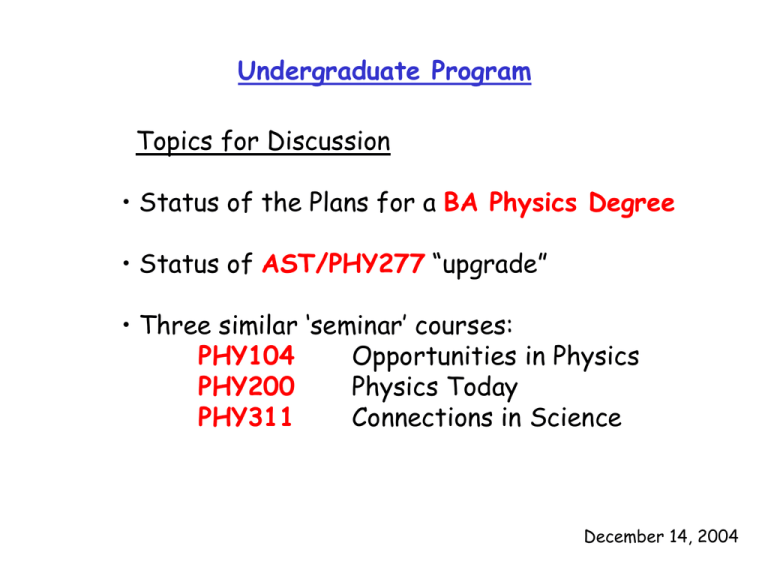
Undergraduate Program Topics for Discussion • Status of the Plans for a BA Physics Degree • Status of AST/PHY277 “upgrade” • Three similar ‘seminar’ courses: PHY104 Opportunities in Physics PHY200 Physics Today PHY311 Connections in Science December 14, 2004 Bachelor of Arts in Physics Where we left last time: • Advantages of a B. A. in Physics seriously questioned • A closer look to other institutions advised What has been done since: • Questionnaire sent to Mid-west Physics Chairs • Twelve responses have been received and compiled Status of Plans for Bachelor of Arts in Physics Last year’s discussions crystallized in concrete proposal This year’s discussion has questioned advantages of instituting a B.A. in Physics: • Prospective clientele is not clear • It is doubtful that it’ll attract more students • It may reduce the number of B. S. Physics majors who take the B.S. track • It may require the introduction of new courses, which is not a good “economics” decision • It is not clear how much other institutions have benefited from a B.A. program Proposal: Take a closer look one more time to more institutions, before settling issue definitively A Survey of Other Institutions Institution BS creds BA creds BS grads BA grads Comments Case Western 60 36 17 3 BS includes various tracks Connecticut 36 24 7 3 18 7 10 1 Florida Iowa Montana New Hamphsire 46 28+12 (sci) Recent program; wild fluctuations in numbers; their guess: no net gain No BA 22 courses: 14 courses: math/phy/che math/phy 10 1 Penn State No BA Purdue No BA Rochester 8 upper div. courses 5 upper div. courses Toledo 18 6 30 5 Vanderbilt Wash. Seattle Rutgers 55/yr! 48 (Prof) 33+9 (Appl). 27 + 18 23 12 Numbers include phys. and phys/astro majors 3-year-old program. Total current enroll. Only BA; no BS No BA; thinking of one. BA for hs teaching, patent-law arguing Questionnaire 1. Do you have (or did you have in past) a BA or 'General' degree program in place? 2. How many credits are required in physics for the BA and the BS? How many credits in related disciplines for each? 3. Do you have courses that are specifically tailored for the BA outside those offered for the BS degree? 4. What are they? On average, how many physics majors graduate per year in the BS and BA tracks? In your estimation, how many of those with the BA degree would not have enrolled in the BS if the BA were not available? 5. If you have a web page that describes the requirements for BS and BA, could you give us the link? Bachelor of Arts in Physics Where we left last time: • Advantages of a B. A. in Physics seriously questioned • A closer look to other institutions advised What has been done since: • Questionnaire sent to Mid-west Physics Chairs • Twelve responses received and compiled What we found: • The BA program marginal as a recruiting tool • Benefits of BA program not significant What we propose: • Shelf plans for BA in Physics, for now • File gathered information • Revisit decision in 5 years, if appropriate Chair’s note: The suggestion to table the institution of a BA degree was accepted. AST/PHY277: Computation for PHY and AST Majors Where we left last time: • Proposal of mandatory, 3-credit AST/PHY277 well received • Syllabus to be completed What has been done since: • A small committee (Swesty, Jacobsen, Drew) has drafted a detailed syllabus AST/PHY 277: An Introduction to Un*x Computing Objective Prepare Physics and Astronomy majors for modern scientific computing, with value well beyond their undergraduate years. Main Areas Computer Literacy Computer Programming Numerical Methods Characteristics Mandatory for AST and PHY majors 3-credit course Taught once a year (Fall semester) Will need a TA, for extensive grading and “help in the field” Limited numbers of seats (25 to 30 max) AST/PHY277: Computation for PHY and AST Majors Where we left last time: • Proposal of mandatory, 3-credit AST/PHY277 well received • Syllabus to be completed What has been done since: • A small committee (Swesty, Jacobsen, Drew) has drafted a detailed syllabus What will happen, if syllabus is approved: • “New” AST/PHY277 forwarded to CAS Curriculum Comm. • CAS Curriculum Comm. will review case in January • If approved, new AST/PHY277 will start in Fall ’05 AST 277/PHY 277 In 1-credit course we teach: In 3-credit course we could add: • • Introduction to Unix – – – – – – – – basic file manipulation commands – editing files – working remotely • Introduction to Fortran 90 – – – – – • integer & floating point arithmetic real & integer variables and expressions basic conditional & loop structures static arrays basics of subprograms • Trapezoidal rule integration Basic least-squares fit Newton-Raphson iteration Euler's method for ODEs more extensive tour of Unix graphics & visualization applications makefiles LaTeX HTML IDL/Mathematica/Maple/Matlab symbolic manipulation Programming – Complex variables & strings – Formatted I/O – allocatable arrays & dynamic memory allocation – All of F90 & procedural parts of C++ – pointers in F90, C, C++ Rudimentary numerical techniques – – – – Computer literacy • Numerical Methods – Greater detail of numerical integration, root-finding, ODE methods – Intro to Monte-Carlo methods The faculty enthusiastically endorsed making “Computation in Physics and Astronomy” a required 3 credit course for first offering in Fall 2005. Three Comparable Seminar Courses PHY104 Opportunities in Physics Stony Brook faculty, alumni and other physicists discuss their current projects and their careers, and relate their activities both to basic undergraduatethe introductory physics curriculum and to areas of on-going research PHY200 Physics Today Introduces students to the excitement of current topics in physics research. Students are introduced to researchers from the University and Brookhaven National Laboratory who are conducting research at the forefront of a variety of subfields of physics. Literature search and presentation skills are developed . PHY311 Connections in Science A selection of the interrelations between physics and other scientific and technological fields, using modern examples from engineering, Investigation of the application of physics to other scientific fields including medicine, biophysics, chemistry, engineering, and applied mathematics, among others. The course is taught as a seminar and includes guest lecturers, tours of laboratories, and discussion of classic and current research projects. Three Comparable Seminar Courses Enrollment: F04 S04 F03 F03 PHY104 7 13 PHY200 5 6 PHY311 9 9 Proposal Leave PHY311 as it is Consolidate PHY104 and PHY200 The undergraduate curriculum committee proposes: 1. Make PHY277 a requirement for PHY major (it already is for AST) 2. Expand AST/PHY277 syllabus and make it a 3-credit course 3. Encourage students to take AST/PHY277 in Sophomore year 4. Encourage upper-division instructors to include numerical problems in their assignments The faculty voted to amalgamate PHY104 and PHY200 into PHY200 starting as soon as possible.
